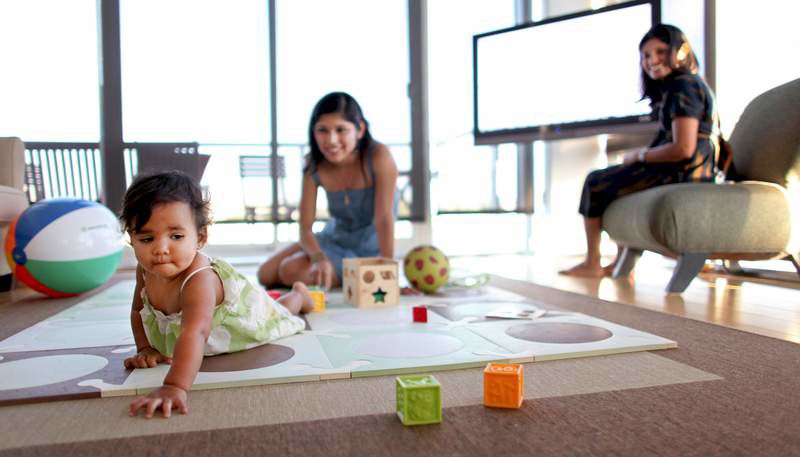Raising a bilingual child, with help from the nanny
Published 5:00 am Thursday, August 19, 2010

- Yashmin Fernandes, right, and her 1-year-old daughter, Calliope Castro, and their bilingual nanny, Elena Alarcon, center, in New York. Popular parenting websites indicate that a growing number of parents here are looking for caretakers to help their children learn a second language.
NEW YORK — When Maureen Mazumder enrolled her daughter, Sabrina, in a Spanish singalong class a year ago, she hoped it would be the first step in helping her learn a second language. But the class did not seem to do the trick, so Mazumder decided to hire a baby sitter, one who would not only care for her daughter but also speak to her exclusively in Spanish.
Mazumder, whose daughter is nearly 3, has company. Although a majority of parents seeking caretakers for their children still want ones who will speak to their children in English, popular parenting blogs and websites indicate that a noticeable number of New York City parents are looking for baby sitters and nannies to help their children learn a second language, one they may not speak themselves.
Parents cite different reasons for hiring baby sitters and nannies to speak a second language with their children. Some struggled to pick up foreign languages and want to make life easier for their children. Some believe it makes them smarter. And naturally, this being the melting pot that is New York, many parents have a connection to another language and want to reinforce it.
Not long ago, many parents insisted that their foreign-language-speaking nannies refrain from using their native tongue and speak only English with their children for fear that another language might muddle their English-language development.
But research shows that learning a second language makes it easier to learn additional languages.
Cost of bilingualism
In recent years, a number of neuroscientists and psychologists have tried to untangle the impact of bilingualism on brain development.
“It doesn’t make kids smarter,” said Ellen Bialystok, a professor of psychology at York University in Toronto and the author of “Bilingualism in Development: Language, Literacy and Cognition.”
Bialystok’s research shows that bilingual children tend to have smaller vocabularies in English than their monolingual counterparts, and that the limited vocabulary tends to be words used at home (spatula and squash) rather than words used at school (astronaut, rectangle). The measurement of vocabulary is always in one language: A bilingual child’s collective vocabulary from both languages will probably be larger.
“Bilingualism carries a cost, and the cost is rapid access to words,” Bialystok said.
In other words, children have to work harder to access the right word in the right language, which can slow them down — by milliseconds, but slower nonetheless.
At the same time, bilingual children do better at complex tasks like isolating information presented in confusing ways, a fact researchers attribute to a more developed prefrontal cortex (the part of the brain responsible for executive decision-making, like which language to use with certain people).
Bialystok said that for a child to retain a language, a nanny probably would not do the trick.
“It’s an interesting solution; it gives young children a consistent exposure,” she said. “But how long will the nanny be around, and who else will the child use that language with?”






